Related Research Articles

Robert Louis Stevenson was a Scottish novelist, essayist, poet and travel writer. He is best known for works such as Treasure Island, Strange Case of Dr Jekyll and Mr Hyde, Kidnapped and A Child's Garden of Verses.
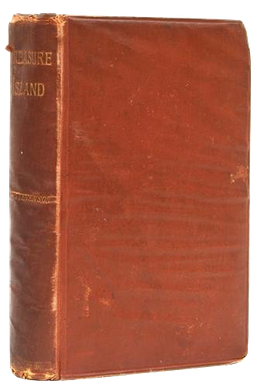
Treasure Island is an adventure and historical novel by the Scottish author Robert Louis Stevenson. It was published in 1883, and tells a story of "buccaneers and buried gold" set in the 1700s. It is considered a coming-of-age story and is noted for its atmosphere, characters, and action.

Long John Silver is a fictional character and the main antagonist in the 1883 novel Treasure Island by Robert Louis Stevenson. The most colourful and complex character in the book, he continues to appear in popular culture. His missing leg and parrot, in particular, have greatly contributed to the image of the pirate in popular culture.
This article contains information about the literary events and publications of 1883.
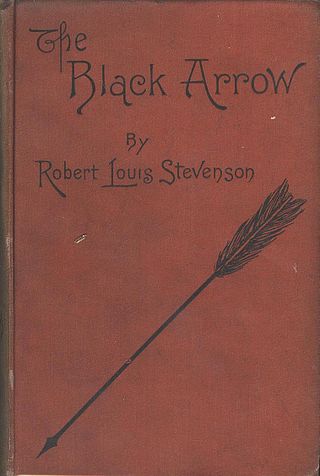
The Black Arrow: A Tale of the Two Roses is an 1888 children's novel by Robert Louis Stevenson. It is both a historical adventure novel and a romance novel. It first appeared as a serial in 1883 with the subtitle "A Tale of Tunstall Forest" beginning in Young Folks; A Boys' and Girls' Paper of Instructive and Entertaining Literature, vol. XXII, no. 656 and ending in vol. XXIII, no. 672 —Stevenson had finished writing it by the end of summer. It was printed under the pseudonym Captain George North. He alludes to the time gap between the serialisation and the publication as one volume in 1888 in his preface "Critic [parodying Dickens's 'Cricket'] on the Hearth": "The tale was written years ago for a particular audience..." The Paston Letters were Stevenson's main literary source for The Black Arrow. The Black Arrow consists of 79,926 words.

Penny dreadfuls were cheap popular serial literature produced during the 19th century in the United Kingdom. The pejorative term is roughly interchangeable with penny horrible, penny awful, and penny blood. The term typically referred to a story published in weekly parts of 8 to 16 pages, each costing one penny. The subject matter of these stories was typically sensational, focusing on the exploits of detectives, criminals, or supernatural entities. First published in the 1830s, penny dreadfuls featured characters such as Sweeney Todd, Dick Turpin, Varney the Vampire, and Spring-heeled Jack.

Captain J. Flint is a fictional golden age pirate captain who features in a number of novels, television series, and films. The original character was created by the Scottish writer Robert Louis Stevenson (1850–1894). Flint first appears in the classic adventure yarn Treasure Island, which was first serialised in a children's magazine in 1881, and later published as a novel in 1883.
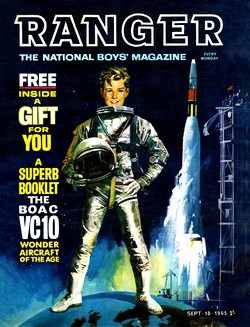
Ranger was a weekly British comics periodical published by Fleetway Publications from 18 September 1965 to 18 June 1966. Intended as an educational publication, the cover described it as "The National Boys' Magazine" and the content mixed comic strips with a much larger quotient of factual articles than most other Fleetway children's titles of the time. Ranger lasted 40 issues before being merged with Fleetway's fellow educational title Look and Learn in 1966.

The Black Spot is a literary device invented by Robert Louis Stevenson for his novel Treasure Island. It is a message on paper or card, signifying the verdict of accused pirates. Depending on the occasion, it means either their deposition from leadership or their intended death at the hands of other pirates.
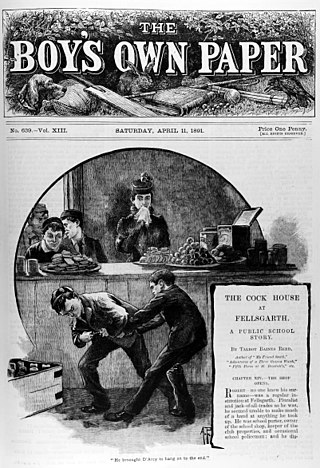
A story paper is a periodical publication similar to a literary magazine, but featuring illustrations and text stories, and aimed towards children and teenagers. Also known in Britain as "boys' weeklies", story papers were phenomenally popular before the outbreak of the Second World War.

George William MacArthur Reynolds was a British fiction writer and journalist.

Chums was a boys' weekly newspaper started in 1892 by Cassell & Company and later, from 1927, published by Amalgamated Press. The publisher gathered the weekly paper into monthly and annual editions. The monthly versions were published on the 25th of the month, and up to November 1920 included all the content of the weekly editions. From then on, the monthly editions had all the story content of the weeklies, but left out the covers. This left a gap which was then filled by short stories, articles and even serials that were not included in the weekly edition. The serial ceased publication in 1941.
Jim Hawkins and the Curse of Treasure Island is a 2001 adventure novel by Frank Delaney, written under the pseudonym of Francis Bryan. It is a sequel to the 1883 novel Treasure Island by Robert Louis Stevenson.
Alexander Hay Japp was a Scottish author, journalist and publisher.
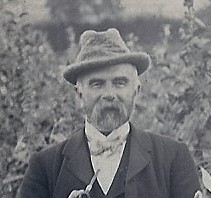
John Proctor was a British artist, cartoonist and illustrator, well known in his day for political cartoons in magazines such as Judy and Moonshine, rivals to Punch. He also illustrated many books and was one of Lewis Carroll's choices to illustrate Alice Through the Looking-Glass instead of John Tenniel.

James Henderson was a British newspaper and magazine proprietor and publisher, who was influential in developing the popular press and comics in Britain. He established James Henderson & Sons Ltd, which published many newspapers and magazines as well as books and postcards.
Henry Marriott Paget (1856–1936) was a British painter and illustrator, who signed his work "HMP".

Gallows on the Sand is a 1956 novel by Morris West. It was the first novel he published under his own name. He later claimed it was written in seven days for $250 in order to pay a tax bill after he had had a nervous breakdown. West credited the book as launching his career as a novelist. However a later review of the author's career dismissed it as a "potboiler".
Robert Leighton was a Scottish journalist, editor, and writer of boys' fiction. He was an editor of juvenile magazines, and through his work at Young Folks he met his future wife Marie Connor, a prolific author in her own right. Leighton became an expert on dogs and their care and produced many works on this topic.
References
- 1 2 Robert Louis Stevenson; John Sutherland (27 September 2007). "The Composition and Publication of the Black Arrow". The Black Arrow. Penguin Books Limited. ISBN 978-0-14-190524-2. Archived from the original on 7 May 2023. Retrieved 9 April 2020.
- 1 2 3 4 Laurel Brake; Marysa Demoor (2009). Dictionary of Nineteenth-century Journalism in Great Britain and Ireland. Academia Press. p. 474. ISBN 978-90-382-1340-8. Archived from the original on 7 May 2023. Retrieved 9 April 2020.
- 1 2 Frederick Joseph Harvey Darton (3 November 2011). Children's Books in England: Five Centuries of Social Life. Cambridge University Press. p. 302. ISBN 978-1-108-03381-7. Archived from the original on 7 May 2023. Retrieved 9 April 2020.
- ↑ Steuart, John Alexander (1928). "Unromantic Reality and Some Engaging Philosophy". Robert Louis Stevenson : a critical biography. p. 382. Retrieved 9 April 2020.
- ↑ "LEIGHTON, Robert". Who's Who. Vol. 59. 1907. p. 1044.
- ↑ Tres, Mark. "Roland Quiz: Pseudonym of the author Richard Martin Howard Quittenton". Benfleet Community Archive. Archived from the original on 24 October 2020. Retrieved 9 April 2020.